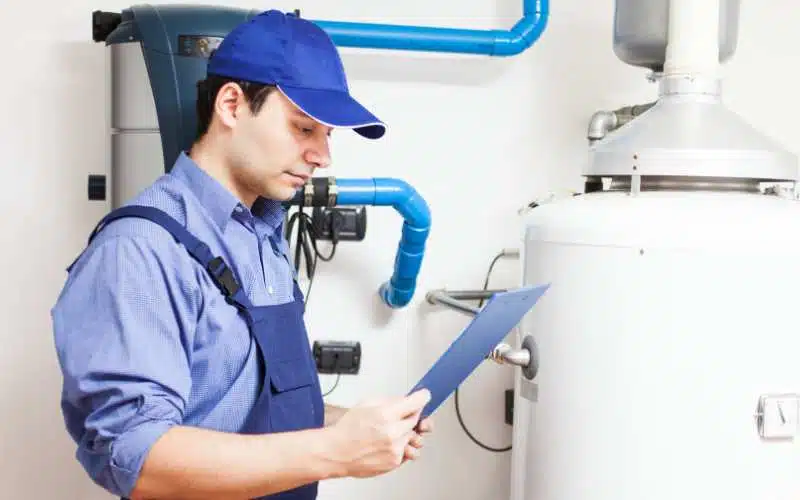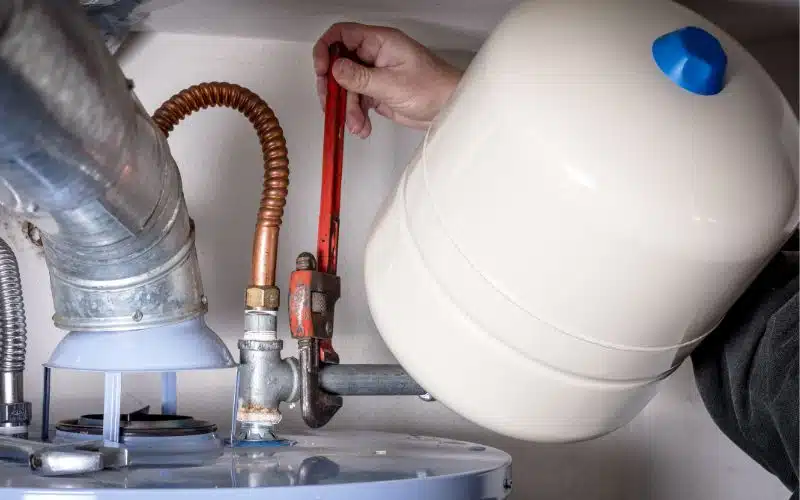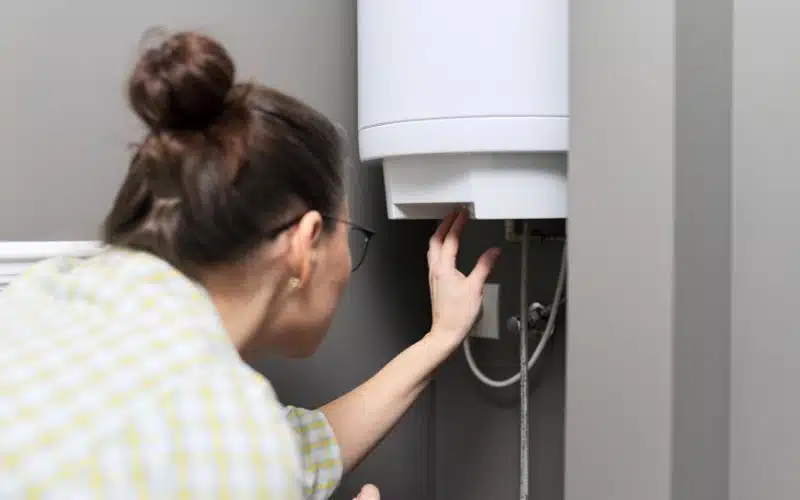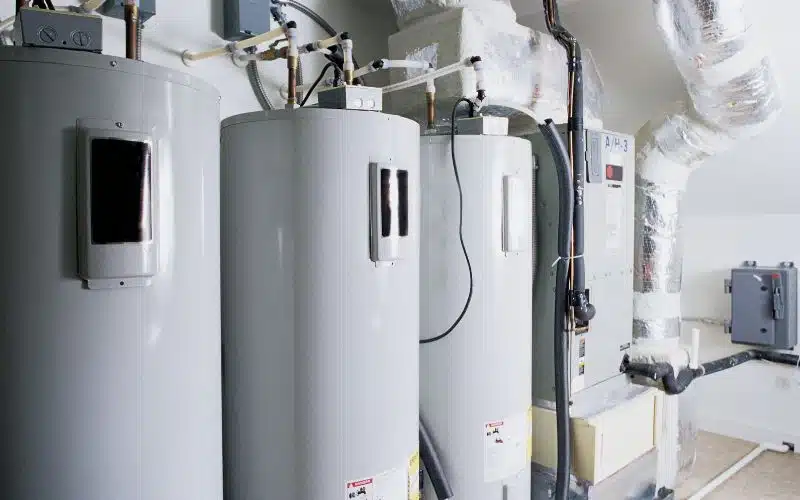We can argue that the furnace room needs more ventilation than most parts of any house. The reason is apparent; hot air builds up in the furnace room.
It becomes problematic if cool air doesn’t reach the furnace room and replace the hot air. That scenario is hazardous to the room structure and anyone entering the furnace.
It helps to take measures that improve airflow in the furnace room. So, putting up vents in the furnace room goes a long way.
Yet, it’s not a good idea to install an air conditioning unit in the furnace room. It’d mean added energy costs, and you risk equipment malfunctioning.
But, the furnace room needs proper ventilation, and that’s non-negotiable.
Every furnace room can be better off with a louvered door. It helps increase airflow in the furnace room and cools it down. A louvered furnace room door is also a great choice if the furnace room lacks air vents. It helps to control the furnace room temperature so it doesn’t get too high.
Do You Need a Louvered Door Furnace Room?

It’s a great idea to install a louvered door in a furnace room as it improves ventilation. It’s a massive boost when the furnace room doesn’t have proper ventilation.
Unfortunately, many safety risks can arise from poor ventilation in the furnace room. But having a louvered furnace room door helps to curtail them.
A louvered door for the furnace room translates to efficient airflow. But, you have to ensure proper air circulation in the furnace room doesn’t fall short.
As a safety standard, two ducts usually sit close to the furnace and water heater. The ducts allow air outside the house into the furnace room and draw the carbon monoxide out.
An accumulation of carbon monoxide is a threat to both the furnace room and humans. When carbon monoxide piles up in the furnace room, the furnace will not work as it should.
That is because the furnace will lack the oxygen it needs for combustion. As a result, the temperature in the furnace will begin to rise, which can lead to a fire outbreak.
So, when a furnace lacks air ducts, it’s best to install a louvered door. Installing a louvered door is still okay, even with two ducts near the furnace and water heater.
The combustion air the door will allow into the furnace room won’t affect the function of the furnace.
But, combustion will help the furnace serve its purpose better. It also serves as an extra safety measure. There’ll be zero accumulation of carbon monoxide in the furnace room.
What Kind of Door Do I Need for a Furnace Room?
The choice of doors for the furnace room leans heavily on the nature of airflow. If there’s poor airflow in the furnace room, you need a louvered door to enhance the airflow.
Then, if the airflow is efficient, a gypsum door is usually the norm. But there’s no harm when you install a louvered door regardless.
A louvered door is a must when there’s also a gas water heater in the furnace room. The presence of both equipment in one room means an increased demand for combustion air.
The gas water heater and furnace will also give off more heat. It won’t be the same as when you have the furnace alone in the room.
So, there’s no need to second-guess it; a louvered door is the best option. Remember that the furnace room doesn’t depend on outside air alone.
It also relies on fresh air from within the house to complete the combustion process. A louvered door permits fresh airflow to the furnace room from within the house.
Radiant heat is another thing to look at besides carbon monoxide accumulation. The heat the furnace gives off can become dangerous at extreme temperatures.
That is most likely in an insulated furnace room that lacks proper ventilation. Installing a louvered door can take out this potential threat.
So, barring other ventilation points, the furnace room is safer with a louvered door.
Here are some advantages of using a louvered door:
| Advantages | Description |
|---|---|
| It increases airflow efficiency. | Louvered doors boost airflow and ventilation in the furnace room. |
| It prevents the growth of mold and mildew. | Mold and mildew growth happens when hot air accumulates in the furnace room. But a louvered helps disperse heat away from the furnace room. Thus, no mold/mildew growth. |
| It helps to notice gas leaks. | The space between a louvered door allows gas to flow out of the furnace room. So, it’ll be easier to notice the smell outside the room than through a sealed door. |
| It makes up for the lack of air vents. | The louvered door can give the furnace enough combustion air even without air vents. |
| Décor accessory | Louvered doors can also serve as interior decoration items. They go nicely with different aesthetic settings in the house. |
Metal Louvered Doors for Furnace Room
Like other louvered door types, metal louvered doors work well for furnace rooms. But, aluminum is usually the preferred metal.
Although louvered doors can comprise many materials, wood is the most popular. That’s because aluminum does well with the heat from the furnace.
Aluminum performs better than other metals that get too hot to handle when heat exposure. It’ll not fall apart due to the constant heat release in the furnace room.
Aluminum louvered doors also remain safe to access when the furnace room gets hot. A metal louvered door is cheaper compared to the wooden type.
It also lasts longer and needs low maintenance. So, you can choose to go for a metal louvered if you like.
The only downside (if it is one at all) is the metal louvered doors have lesser aesthetic value.
Also, they don’t come in various colors, so they may not match the interior décor in a house. That is unlike the wooden type that comes in different colors and is easier to paint.
How Close Can a Door Be to a Furnace?
The standard procedure is to leave 24 inches between the furnace and the door to the furnace room.
That’s only the least clearance distance; you can choose to have more than that if space permits. But some state codes need up to 30 inches or more as the least clearance distance.
The furnace room door should also be wide enough to remove the furnace. Besides the furnace door clearance, you should observe other safety clearance distances.
They are all in place to ensure proper airflow in the furnace room. Clearance around the furnace allows for easy maintenance and repairs.
You also have to ensure that you leave enough space by the side of the furnace. That is to ensure that its vents are not blocked, so it doesn’t overheat.
Should Door to Furnace Room Be Open or Closed?
If the furnace room door should stay open or closed depends on the ventilation in the furnace room.
When the door is open, that boosts the airflow in the furnace room. But that could be a safety risk if you have kids or pets moving around your home.
You would prefer to avoid any potential injury to man and animal alike. So, leaving the door open in that instance is not a good option.
So, that’s why a louvered furnace door is the best choice. It’d allow fresh air to flow into the furnace room even when closed.
Then again, it’s also okay to close the furnace room door. But only when the vents in the furnace room are fully functional.
Regardless of closed doors, the vents will provide combustion air for the furnace. In this case, you can make do with a gypsum door for the furnace room.
Always double-check ventilation in the furnace room. Ensuring the airflow is efficient will avert any dangers to yourself and the furnace.
Conclusion
A louvered furnace room door is an excellent plus for efficient airflow in the furnace room. Of course, installing one isn’t always mandatory.
But experts strongly suggest a louvered door for the furnace room. It improves airflow in the furnace room, and it’s never needless.
Also, a louvered door will still be helpful with the furnace room’s working vents.





